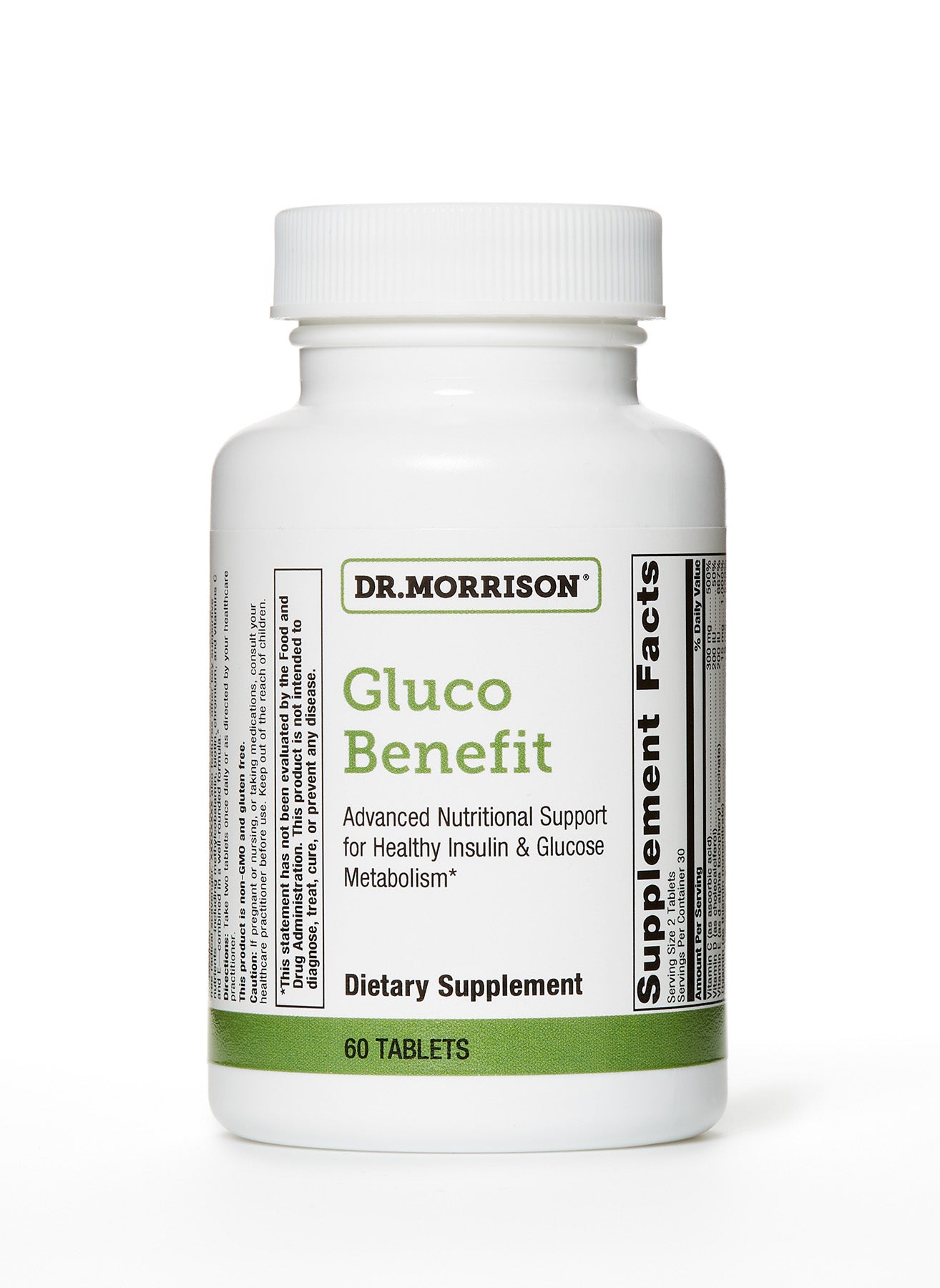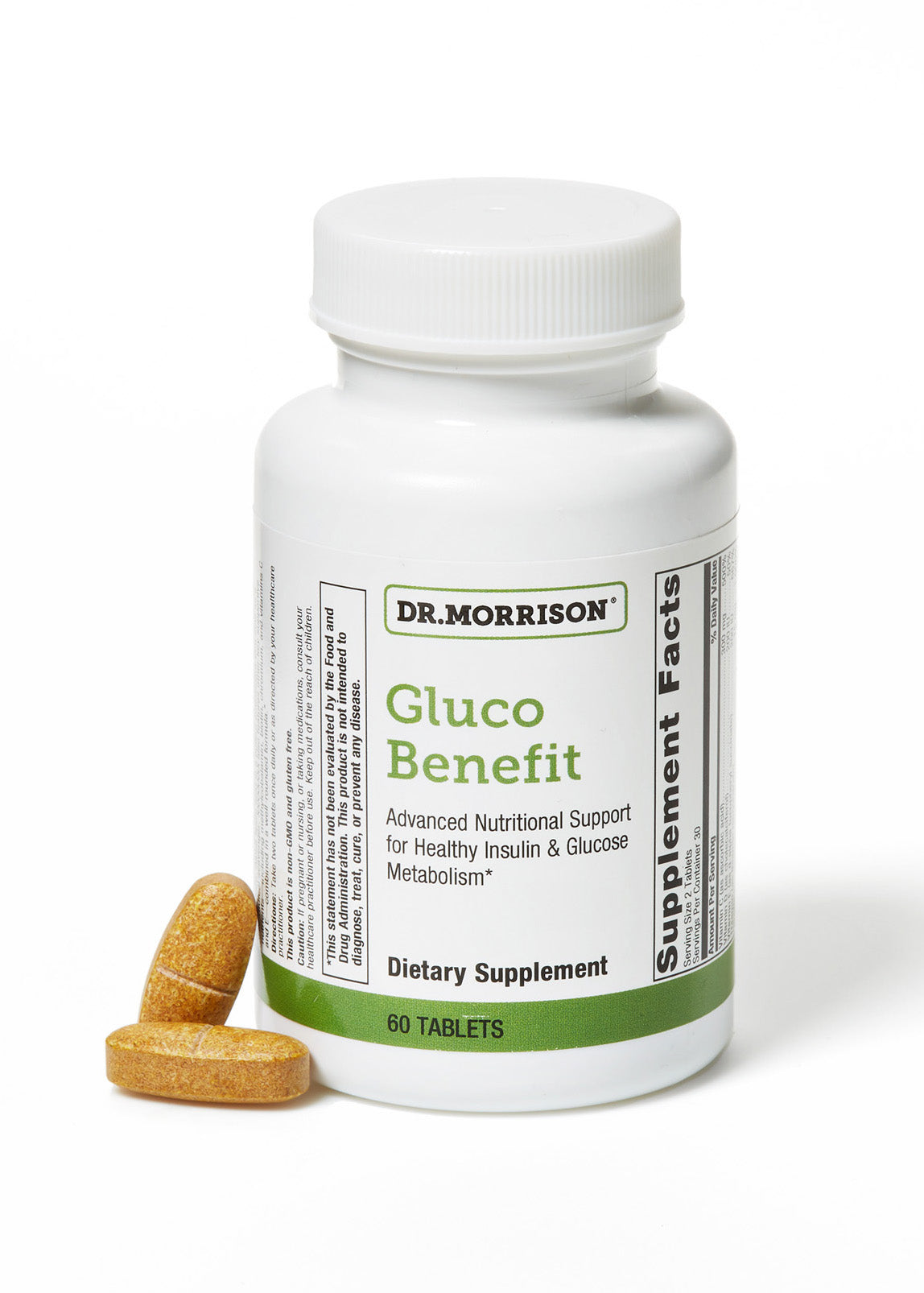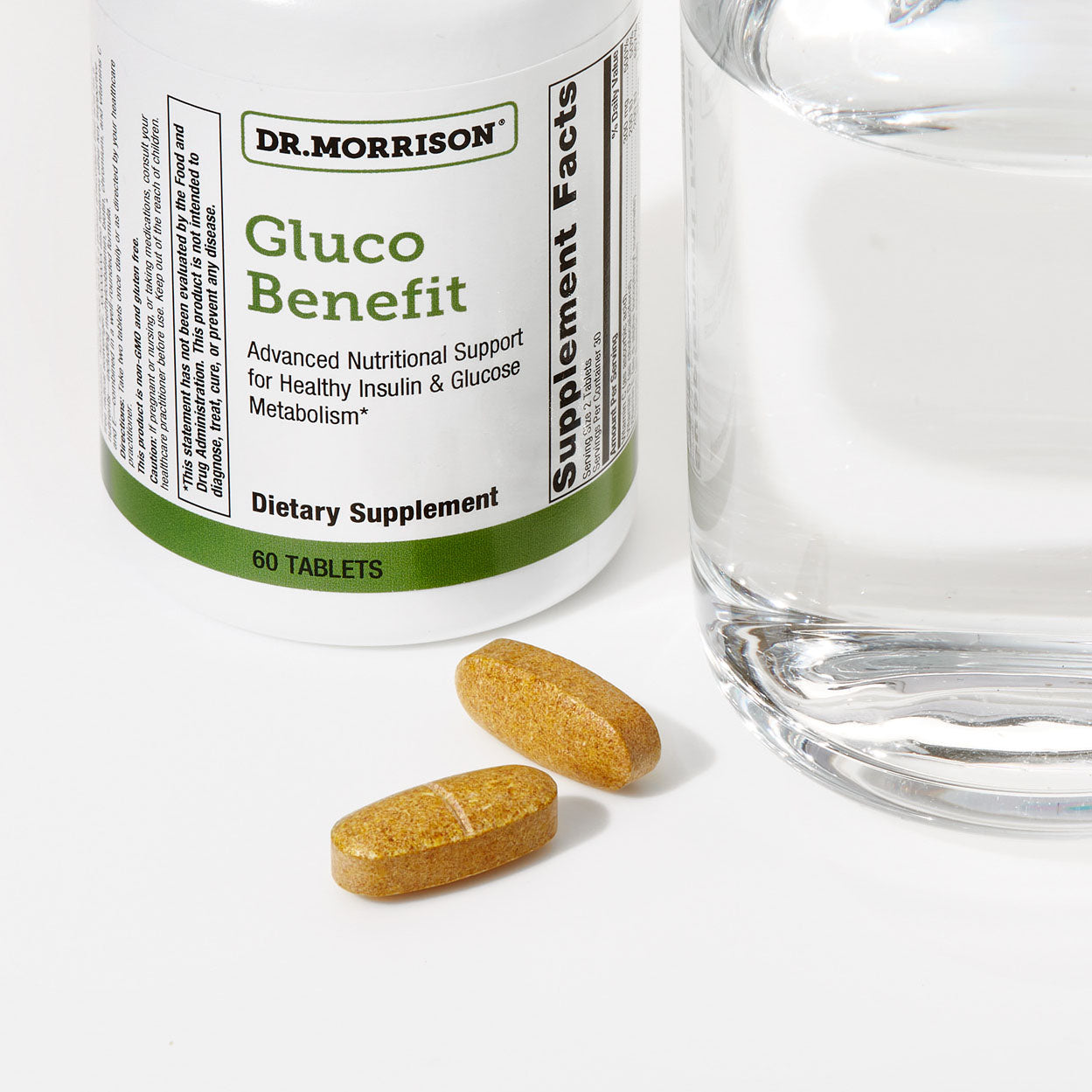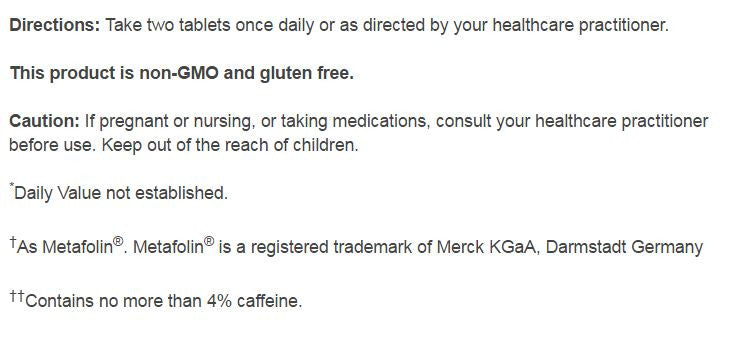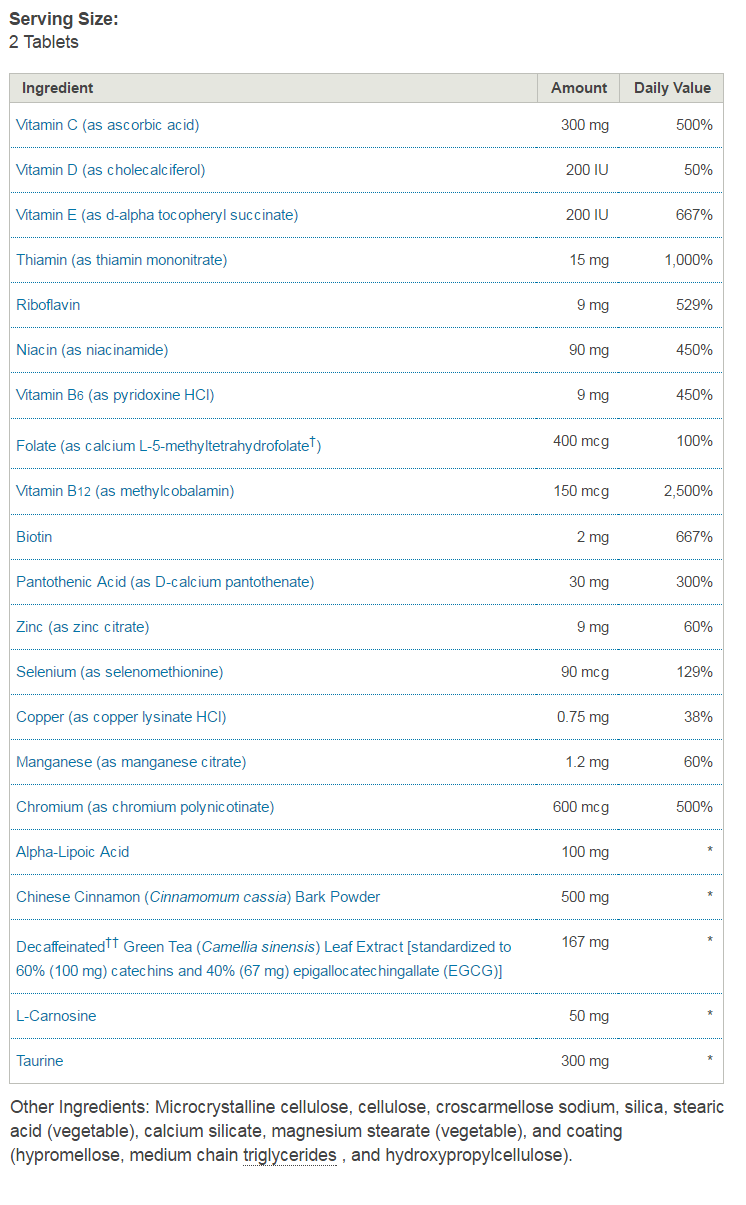Gluco Benefit
$ 63.00
Size: 120 Tablets
Advanced Nutritional Support for Healthy Insulin & Glucose Metabolism*
Please select all options.
Gluco Benefit features a unique formula that supports healthy blood sugar and insulin metabolism when used as part of a healthy diet for maintaining healthy blood sugar levels already in the normal range.*
Antioxidants
Research shows that antioxidants are crucial for healthy blood sugar metabolism, and can support glucose transport into cells.1 In Gluco Benefit, we’ve combined the antioxidant vitamins C and E with selenium, alpha-lipoic acid, and free radical-scavenging green tea catechins for optimal broad-spectrum antioxidant protection.* These nutrients may increase the production of glutathione, the body’s most important antioxidant, which is important for glucose control.*[2]
Glucose support compounds
Green tea extract also contains epigallocatechin gallate (EGCG), which has been shown in numerous clinical studies to support healthy glucose metabolism, possibly due to its signaling capabilities.*[3,4] Cinnamon and chromium are well-established in clinical research to promote healthy blood sugar levels.*[5,6] Along with alpha-lipoic acid and the amino acid taurine, Gluco Benefit targets multiple mechanisms for insulin and glucose control.*[7,8]
Comprehensive micronutrient blend
Micronutrient deficiencies are common in insulin resistance.9 Gluco Benefit is designed to provide a powerful spectrum of activated B vitamins—including methylated B12 and methylfolate—along with trace minerals to promote optimal energy production and cellular efficiency.*
*These statements have not been evaluated by the FDA and are not intended to treat or cure any disease.
Every ingredient in Dr. Morrison’s Gluco Benefit formula is research-backed. Gluco Benefit’s blend of vitamins, trace minerals, specialized nutrients, and herbal extracts is both comprehensive for daily support, and targeted for metabolic optimization.
2 TABLETS PER SERVING
Vitamin C (as ascorbic acid) 300 mg
Vitamin D (as cholecalciferol) 5 mcg (200 IU)
Vitamin E (as d-alpha tocopheryl succinate) 134 mg
Thiamin (as thiamin mononitrate) 15 mg
Riboflavin 9 mg
Niacin (as niacinamide) 90 mg
Vitamin B6 (as pyridoxine HCl) 9 mg
Folate (as calcium L-5-methyltetrahydrofolate) 680 mcg DFE
Vitamin B12 (as methylcobalamin) 150 mcg
Biotin 2,000 mcg
Pantothenic Acid (as D-calcium pantothenate) 30 mg
Zinc (as zinc citrate) 9 mg
Selenium (as selenomethionine) 90 mcg
Copper (as copper lysinate HCl) 0.75 mg
Manganese (as manganese citrate) 1.2 mg
Chromium (as chromium polynicotinate) 600 mcg
Chinese Cinnamon (Cinnamomum cassia) Bark Powder 500 mg
Taurine 300 mg
Decaffeinated Green Tea (Camellia sinensis) Leaf Extract [standardized to 60% (100 mg) catechins and 40% (67 mg) epigallocatechingallate (EGCG)] 167 mg
Alpha-Lipoic Acid 100 mg
L-Carnosine 50 mg
Other Ingredients: Microcrystalline cellulose, croscarmellose sodium, stearic acid (vegetable), silica, magnesium stearate (vegetable), and coating (hypromellose, medium-chain triglycerides, and hydroxypropylcellulose).
Take two capsules daily, or as directed by your healthcare professional.
Caution: If pregnant or nursing, or taking medications, consult your healthcare practitioner before use.
The review presents modern views about the role of oxidative stress reactions in the pathogenesis of types 1 and 2 diabetes mellitus and their complications based on the analysis of experimental and clinical studies. The sources of increased ROS generation in diabetes are specified, including the main pathways of altered glucose metabolism, oxidative damage to pancreatic β-cells, and endothelial dysfunction. The relationship between oxidative stress, carbonyl stress, and inflammation is described. The significance of oxidative stress reactions associated with hyperglycemia is considered in the context of the "metabolic memory" phenomenon. The results of our studies demonstrated significant ethnic and age-related variability of the LPO-antioxidant defense system parameters in patients with diabetes mellitus, which should be considered during complex therapy of the disease. Numerous studies of the effectiveness of antioxidants in diabetes mellitus of both types convincingly proved that antioxidants should be a part of the therapeutic process. Modern therapeutic strategies in the treatment of diabetes mellitus are aimed at developing new methods of personalized antioxidant therapy, including ROS sources targeting combined with new ways of antioxidant delivery.
The effects of a 7.3-y supplementation with garlic and micronutrients and of anti-Helicobacter pylori treatment with amoxicillin (1 g twice daily) and omeprazole (20 mg twice daily) on serum folate, vitamin B-12, homocysteine, and glutathione concentrations were assessed in a rural Chinese population. A randomized, double-blind, placebo-controlled, factorial trial was conducted to compare the ability of 3 treatments to retard the development of precancerous gastric lesions in 3411 subjects. The treatments were: 1) anti-H. pylori treatment with amoxicillin and omeprazole; 2) 7.3-y supplementation with aged garlic and steam-distilled garlic oil; and 3) 7.3-y supplementation with vitamin C, vitamin E, and selenium. All 3 treatments were given in a 2(3) factorial design to subjects seropositive for H. pylori infection; only the garlic supplement and vitamin and selenium supplement were given in a 2(2) factorial design to the other subjects. Thirty-four subjects were randomly selected from each of the 12 treatment strata. Sera were analyzed after 7.3 y to measure effects on folate, vitamin B-12, homocysteine, and glutathione concentrations. Regression analyses adjusted for age, gender, and smoking indicated an increase of 10.2% (95%CI: 2.9-18.1%) in serum folate after garlic supplementation and an increase of 13.4% (95%CI: 5.3-22.2%) in serum glutathione after vitamin and selenium supplementation. The vitamin and selenium supplement did not affect other analytes and the amoxicillin and omeprazole therapy did not affect any of the variables tested. In this rural Chinese population, 7.3 y of garlic supplementation increased the serum folate concentration and the vitamin and selenium supplement increased that of glutathione, but neither affected serum concentrations of vitamin B-12 or homocysteine.


